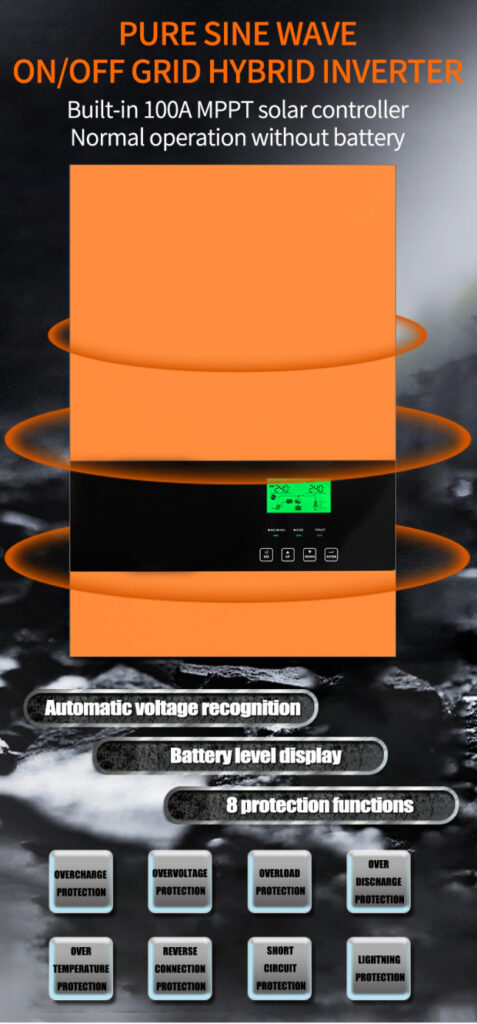Inverter, also known as power regulator, can be divided into independent power supply and grid-connected use according to the use of inverter in photovoltaic power generation system. According to the waveform modulation method, it can be divided into square wave inverter, step wave inverter, sine wave inverter and combined three-phase inverter. For inverters used in grid-connected systems, they can be divided into transformer-type inverters and transformer-less inverters according to whether there is a transformer.
The role of photovoltaic inverters
The inverter not only has the function of DC-AC conversion, but also has the function of maximizing the performance of the solar cell and the function of system fault protection. To sum up, there are automatic operation and shutdown function, maximum power tracking control function, anti-independent operation function (for grid-connected system), automatic voltage adjustment function (for grid-connected system), DC detection function (for grid-connected system), DC grounding detection Function (for grid-connected systems). Here is a brief introduction to the automatic operation and shutdown functions and the maximum power tracking control function.

- Automatic operation and stop function
After sunrise in the morning, the solar radiation intensity gradually increases, and the output of the solar cell also increases. When the output power required by the inverter is reached, the inverter starts to run automatically. After entering into operation, the inversor will monitor the output of the solar cell module all the time. As long as the output power of the solar cell module is greater than the output power required for the inverter to work, the inverter will continue to run; it will stop at sunset, even if it is cloudy and rainy. The inverter can also operate. When the output of the solar cell module becomes smaller and the output of the inverter is close to 0, the inverter will form a standby state.

- Maximum power tracking control function
The output of a solar cell module varies with the intensity of solar radiation and the temperature of the solar cell module itself (chip temperature). In addition, since the solar cell module has the characteristic that the voltage decreases with the increase of the current, there is an optimum operating point where the maximum power can be obtained. The intensity of solar radiation is changing, and obviously the optimal working point is also changing. Relative to these changes, the operating point of the solar cell module is always at the maximum power point, and the system always obtains the maximum power output from the solar cell module. This control is the maximum power tracking control. The biggest feature of inverters for solar power systems is that they include the function of maximum power point tracking (MPPT).






